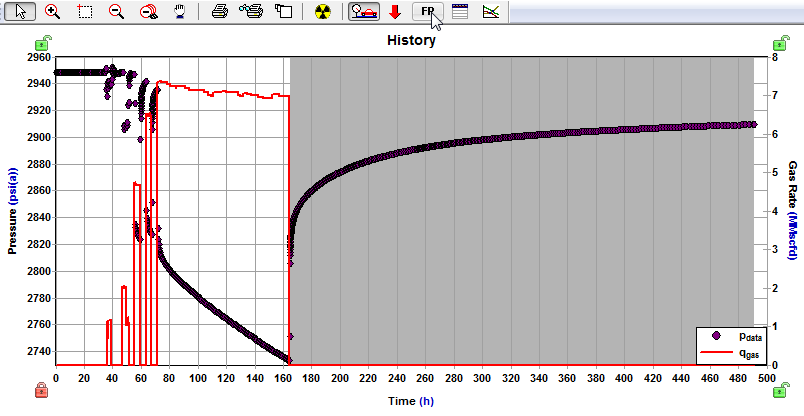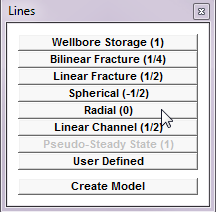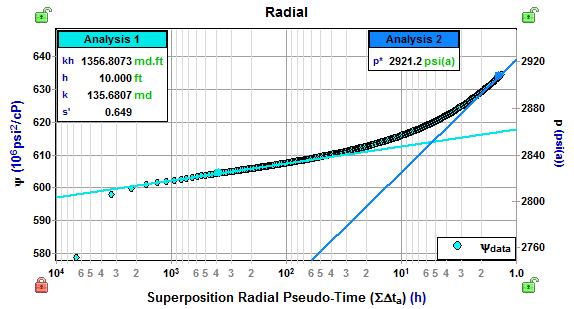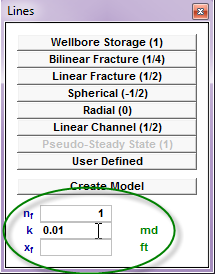Performing a Conventional Test Analysis
To perform a conventional test analysis:
1. Create a diagnostic analysis. If the test was performed on a vertical well, click the Analysis menu and select Vertical Diagnostic. Or, if it was performed on a horizontal well, click the Analysis menu and select Horizontal Diagnostic. 
2. Enter pay (h), porosity (Φ), and saturations in the Parameters dialog box. Enter effective horizontal well length (Le) for a Horizontal Diagnostic. 
3. Select the flow or shut-in period to analyze. 
To change the selected flow period, click the FP icon on the toolbar; then, click the history plot in the region where you would like to analyze.

4. Identify flow regimes. On the Derivative plot (i.e., bottom-right plot), look at the slope of the semi-log derivative data. A well-established zero slope (horizontal trend) indicates radial flow has developed; a slope of 1/2 indicates linear flow; and a slope of 1/4 indicates bilinear flow. See Flow Regimes for more information.
- If radial flow was identified, click the Radial button in the Lines dialog box.
- Add lines for all other flow regimes you identified.

If radial flow was not identified, you may want to place a radial flow line at the end of the data to get estimates of permeability and p* to initialize the reservoir model.
6. Position the lines through the appropriate data. Click and drag the center point of the line on the Derivative plot. On the specialized plots (e.g., Radial plots), you may also click and drag the center point of the line, or click the line to rotate it.
Note: The radial line yields estimates for flow capacity (kh), skin, and p*.

7. Some lines, such as the linear fracture line, calculate bulk parameters such as Xf* sqrt(k). Click the line's annotation box to select the line. The Lines dialog box displays input parameters, and you can enter one or more parameters to back-calculate another. For the linear fracture line, you can specify the number of fractures (e.g., for horizontal multifrac completions) and an estimate of k to back-calculate Xf.
